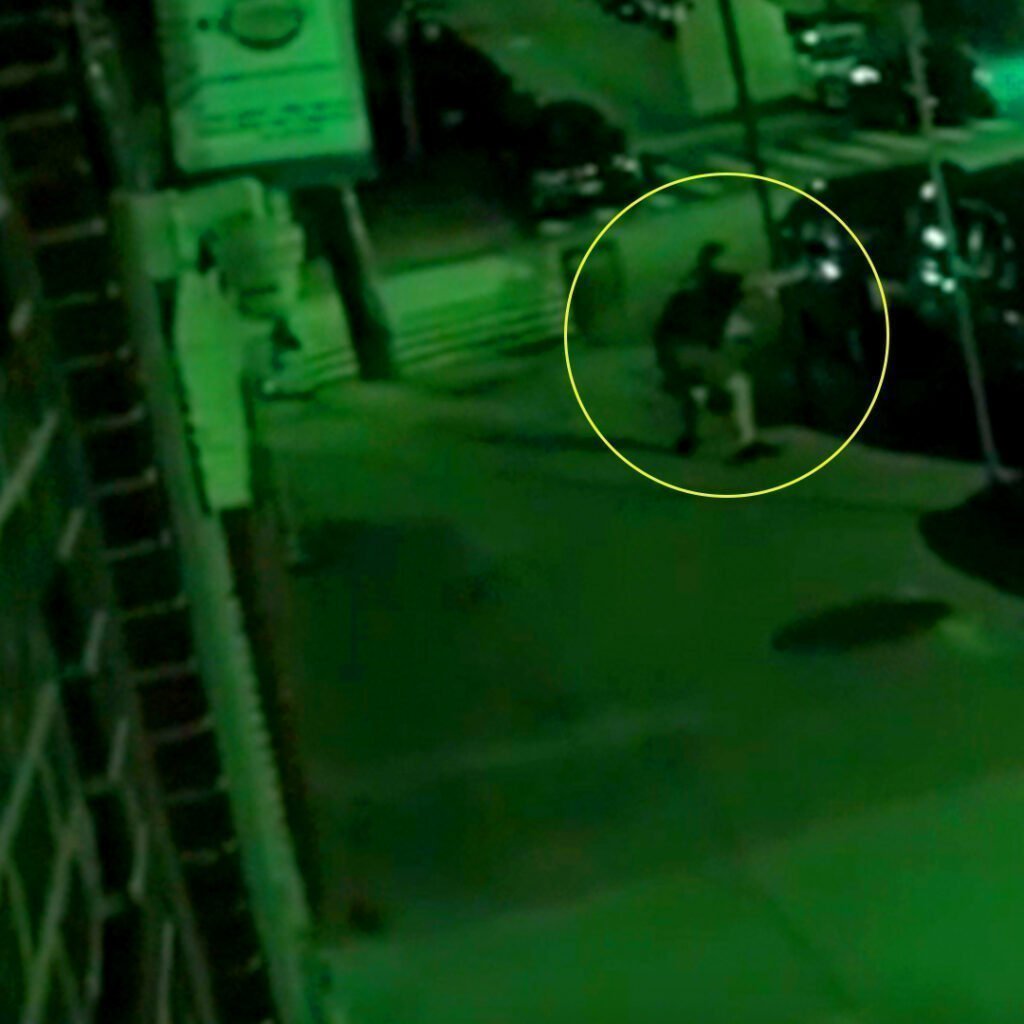NEGOTIATING ABOLITION
Achieving meaningful change in institutions like law enforcement is painful and, quite frankly, impossible. These systems are stubborn, and so when all the evidence points to their flaws, they nudge rather than move. It then continues to work its way back to its original state through propaganda and politics. In this article, we will discuss the significance of leveraging and negotiation as strategies, as well as how they can be used to pave the way for transformation in these institutions.
The leverage comes from a wealth of statistics, alternative models, and case studies that spotlight the inadequacies of the current punitive system. These insights demonstrate not only the inefficiencies of punitive approaches but also the potential of community-led solutions. By presenting this data comprehensively, expansively, and convincingly to the public, we can lay the groundwork for a compelling argument that reform is insufficient and that abolition is the necessary route to genuine transformation.
In our journey toward transformation, negotiation emerges as a vital art of strategy. While leveraging draws strength from the wealth of information at our disposal, negotiation is the nuanced execution of our vision. It’s not merely about asking or demanding “defunding the police” outright; it’s about orchestrating a strategic dance.
Consider this: if we seek $100, we don’t start by proposing just that amount. Instead, we set our sights higher, perhaps at $250, and make a compelling argument for it. This approach serves a twofold purpose. First, it positions our initial request at a higher benchmark, ensuring that even a negotiated reduction lands us closer to our desired outcome. Second, it underscores the gravity of our proposals, emphasizing the need for substantial change.
But negotiation is more than a numbers game; it’s about controlling the narrative and focus. When the opposition can only argue that crime will run rampant without punitive measures, we co-opt that narrative. We steer the conversation toward a section of crime where we possess well-researched answers and community-driven solutions. By the time this argument takes center stage, there’s no room for the opposition to make alternative claims. They appear evasive, sidestepping the very issues they themselves raised. This strategic maneuver paints them as sore losers lacking genuine solutions.
This is the essence of how abolition finds acceptance at the negotiation table. It’s not just about demanding defunding; it’s about guiding the conversation toward a more meaningful and equitable “defunding.” By adopting this tactical approach, we ensure that a significant portion of funding is channeled back into communities, fostering lasting change and holistic well-being for all.
While the concepts of defunding and reforming are often discussed in tandem, the sequence in which they occur is pivotal. True transformation begins with abolition—the recognition that the current system’s fundamental flaws cannot be addressed through incremental changes alone. Abolition signifies a commitment to dismantling structures that perpetuate harm and prioritizing new models rooted in justice, compassion, and community well-being.
Defunding, in this context, is not the incremental reduction of resources as seen in the past but rather the practical implementation of our commitment to abolition. By resolutely reallocating resources away from punitive institutions and refunding the community, as opposed to “defunding” the harms, we embark on the journey of creating a safer and more equitable society. This step serves as a bridge between abolition and reform, recognizing that transformation requires not only halting harmful practices but actively constructing new, sustainable alternatives.
In this journey of change, the commitment to refunding the community cannot be understated. It’s about more than just reallocating funds; it’s about reinvesting in the people, neighborhoods, and ideas that foster a thriving society. This commitment ensures that essential services like food security, mental health support, and education receive the attention and resources they deserve. It’s a deliberate step toward addressing systemic disparities and creating a sustainable, inclusive future.
To achieve lasting change, it’s crucial to avoid the pitfalls of half-measures and temporary solutions. By committing fully to refunding the community, we affirm that transformation is not only possible but necessary. This commitment goes beyond mere policy changes; it’s a fundamental shift in societal values that recognizes that when we invest in people’s well-being, we’re investing in the collective future.
In summary, the path to abolishing, defunding, and reforming harmful systems is complex but achievable. Leveraging data and alternative models is essential to convincing society of the necessity of change, and negotiation tactics are vital for pursuing that paradigm shift. Abolition paves the way for defunding and reform, with the full commitment to refunding the community at its core. This holistic approach holds the potential to create a society that is safer, more just, and truly supportive of every individual’s well-being.
PART 2
Defunding punitive programs and systems in New York City, such as the incarceration system and the police, while redirecting funds to support social programs is a significant and necessary step toward reducing the system’s self-perpetuating harm while creating both incentives and initiatives to restore those who’ve been harmed. This shift acknowledges the inefficiencies and disparities inherent in punitive approaches and recognizes the value of investing in community-driven initiatives. Let’s delve into several key aspects of this approach:
Economic Sensibility of Alternatives to Incarceration: Studies consistently demonstrate that alternatives to incarceration are not only more cost-effective but also more successful in reducing recidivism rates. Programs that focus on restorative justice, rehabilitation, and reintegration have shown better outcomes in terms of reducing criminal behavior and enhancing community safety. By reallocating funds from costly incarceration systems to these alternatives, cities like New York City can save substantial amounts of money while fostering rehabilitation and reintegration.
The NYPD is one of the most well-funded police forces in the world. However, there are alternative policing models that have proven to be more effective and efficient. Programs such as CAHOOTS in Eugene, Oregon, and BART’s Crisis Intervention Specialist (CIS) program in the San Francisco Bay Area train system, for example, focus on crisis intervention and mental health support rather than traditional policing. These models show that redirecting funds to specialized community-led responses can more effectively address the root causes of issues while reducing unnecessary arrests and violence.
CAHOOTS (Crisis Assistance Helping Out On The Streets)
CAHOOTS is a crisis intervention program in Eugene, Oregon, that provides an alternative response to non-violent crises involving mental health, homelessness, and addiction. It operates with a team of trained crisis workers, including medics and mental health professionals, who respond to calls for assistance alongside or instead of traditional law enforcement. CAHOOTS aims to de-escalate situations, offer immediate support, and connect individuals to appropriate services, such as mental health treatment or shelter. Of the estimated 24,000 calls CAHOOTS responded to in 2019, only 311 required police backup.
BART Crisis Intervention Specialist (CIS)
The BART Crisis Intervention Specialist (CIS) program is part of the San Francisco Bay Area’s BART train system. It focuses on providing crisis intervention and mental health support to individuals within the transit system. CIS professionals serve as liaisons between BART police, community organizations, and individuals in crisis. They work throughout the transit system to connect unhoused riders and those experiencing mental health crises with the necessary services. The program emphasizes a balanced approach to outreach and engagement, aiming to address the root causes of homelessness and mental health issues.
CURE Violence and Crime Reduction
Investing in violence prevention programs like CURE Violence has shown significant positive impacts on reducing crime rates. CURE Violence uses a public health approach to address violence as a contagious disease, intervening to interrupt cycles of retaliation and providing support to individuals at risk. By prioritizing prevention and support rather than punitive measures, cities can see safer neighborhoods and lower crime rates over time.
Exploring innovative approaches to community safety and violence prevention is more crucial than ever. ProPublica investigates the impact of these programs in an in-depth article by Alec MacGillis. Discover how local violence interrupters are working to make a difference and prove the worth of these initiatives.
The HOPE Program (Hawaii’s Opportunity Probation with Enforcement)
The HOPE Program in Hawaii is an innovative approach to probation that focuses on swift and certain sanctions rather than delayed and uncertain punishment. Offenders are closely monitored, and if they violate probation terms, they are promptly and consistently sanctioned. Studies have shown that this approach reduces recidivism rates significantly. It’s not only cost-effective compared to traditional probation but also more successful in preventing re-offending.
Green Dot Bystander Intervention Program
The Green Dot Bystander Intervention Program is an evidence-based initiative that targets sexual violence prevention on college campuses and in communities. It equips individuals with the skills to recognize signs of potential violence and empowers them to intervene safely. Green Dot emphasizes the importance of bystander intervention in preventing sexual violence and creating a culture of safety and respect.
Restorative Response Baltimore
Restorative Response Baltimore utilizes community conferencing to resolve conflicts and strengthen communities, whether within the juvenile justice system, schools, courts, or neighborhoods. It accelerates conflict resolution within two weeks by engaging all parties immediately. A distinctive feature is collaborative decision-making on resolutions, leading to over 95% compliance. This program addresses the overrepresentation of youth of color, enhances school culture, and positively impacts over 1500 Baltimore City School teachers. Over 18,000 residents have successfully resolved their disputes, transforming conflict into community cohesion.
Shifting from expensive hotel accommodations to programs that encourage collective ownership, such as housing cooperatives and community land trusts, is not only economically sensible but also socially transformative. Collective ownership models provide stable, affordable housing solutions that promote community engagement, reduce homelessness, and prevent the displacement of vulnerable populations. These programs not only save costs in the long run but also contribute to stronger, more connected neighborhoods.
Homelessness and Criminal Justice Involvement:
- According to the Substance Abuse & Mental Health Services Administration, approximately 15% of the homeless population in the United States has severe mental illness, and nearly 18% are victims of domestic violence.
- A study published in the journal Psychiatric Services found that homeless individuals with mental illnesses were more likely to have a history of arrests and incarceration.
Housing First Programs:
- The U.S. Department of Housing and Urban Development (HUD) reported that Housing First programs, which provide stable housing to chronically homeless individuals, have been associated with a 30-40% reduction in homelessness among participants.
- A study published in JAMA Internal Medicine found that Housing First programs reduced emergency room visits and hospitalizations among participants, contributing to cost savings for healthcare systems and potentially reducing associated crimes.
Crime Prevention Through Environmental Design (CPTED):
- According to studies cited by the National Institute of Justice, housing complexes with better environmental features—like more lighting, security cameras, and access control measures—are less likely to experience criminal activity.
Residential Stability and Social Capital:
- A report by the Urban Institute found that neighborhoods with higher levels of residential stability tend to have stronger social networks and community organizations, which can deter criminal activity.
Displacement and Gentrification:
- Research conducted in cities experiencing gentrification, such as New York City, has shown that rapid housing displacement can lead to increased homelessness and related crimes among displaced populations.
Funding social programs that encourage artistic expression, athletic development, and community advocacy can have profound long-term effects. These programs empower individuals to pursue their passions, develop valuable skills, and become productive members of society. By providing opportunities for personal growth and creative expression, cities foster a sense of belonging, mental well-being, and community pride. This, in turn, contributes to crime reduction, social cohesion, and a more vibrant local culture.
Free Art NYC
https://freeartsnyc.org/teen-arts-program
The 2019 NYC Comptroller’s report reveals a stark imbalance in the creative workforce, with people of color constituting 68% of the city’s population but comprising only 34% of the creative workforce. In response to this disparity, the Teen Arts Program offers support to individuals aged 13-21, facilitating their exploration of the arts academically or professionally. Through mentorship and a range of activities, including portfolio development, studio visits, skills workshops, and paid internships, this program strives to rectify the inequities within the creative sector and promote a more inclusive environment.
Environmental Hood Restoration
https://www.facebook.com/HoodRestoration
EHR (Environmental Hood Restoration) is a community-oriented organization in Brownsville, NYC, that offers a diverse range of programs and events. These include skateboarding clinics, boxing clinics, gardening (in collaboration with GreenThumb), open mic opportunities for local artists, and community clean-up initiatives. EHR places a strong emphasis on promoting mental and physical wellness among young individuals while fostering a spirit of collaboration to bring positive change to the neighborhood. Every Thursday at 1 p.m., they distribute fresh-produced and canned foods in their neighborhood.
In summary, defunding punitive programs and systems in favor of funding social programs is not only economically sensible but also morally imperative. It acknowledges the need to address systemic issues at their roots and prioritize community well-being over punitive approaches. By reallocating resources to alternatives like restorative justice, collective ownership, crisis intervention, violence prevention, and community development, cities can create safer, more inclusive, and thriving environments for all residents.











